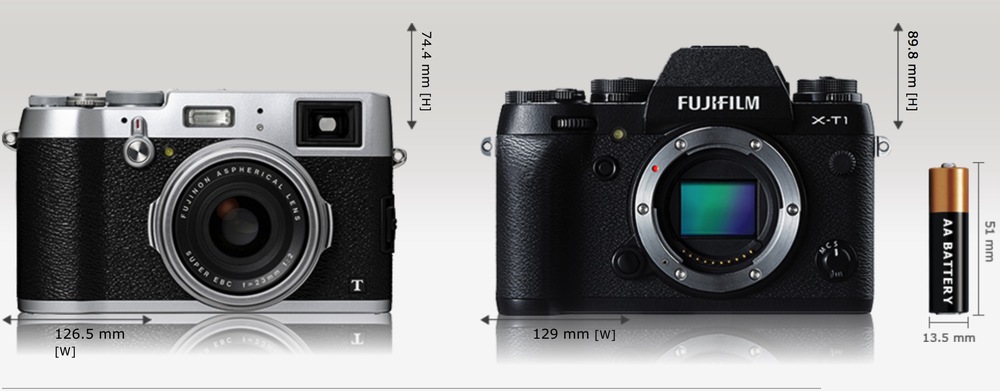
After extensive experience with the Fuji X-T1, especially using it with the 27mm f/2.8 pancake lens for street photography, I now have my hands on the new X100T. The X100 cameras, launched in 2011, are probably the most popular modern digitals for street and the T is the latest iteration with electronic shutter, an improved hybrid viewfinder and higher-resolution screen.
But first, back to basics. Many consider a Leica M, from the original M3 to the latest M240, to be the natural choice and I wouldn’t entirely disagree: I love all Ms. But this little X100T is a great alternative with a cartload of bells and whistles if you like that sort of thing. The Leica offers simplicity and, without a doubt, this can be a positive thing. The X100T is a far more complex digital camera but it can provide an equally rewarding experience if you take the trouble to get to grips with the features.

In reality, while comparisons may be made, Leicas are in a class of their own, if only on price, and cannot be directly compared with digital mirrorless cameras such as those from Fuji. Biggest direct competition for the X100T actually comes from its siblings, the X-E2 and X-T1.
Personally, I would now choose the X-T1 over the X-E2 which must surely be due for upgrade soon; it is the oldest camera of the bunch. Ignoring price, which clearly is a factor, the X-T1 is the better choice because of its electronic shutter and improved handling, plus that large viewfinder. To my mind, therefore, the choice lies between the X100T and the X-T1.
Both these latest cameras make excellent tools for street photography as I outlined in my earlier article. At that time I had not shot the X100T, although I am familiar with the two earlier models, the X100 and X100S. In this article I look at some of the significant differences between the two cameras but I am not attempting a comprehensive review of the features. I concentrate on size, weight, handling, appearance and suitability for general street photography. I am not touching on results since, in broad terms, both will produce equivalent photographs in any given set of circumstances.
Physical characteristics
After using the X-T1 with the 27mm (41mm equivalent) lens, I find it fascinating to handle the X100T and to refine my comparison.
The X100T is slightly smaller and lighter than the X-T1 (without lens) and brings the benefit of a hybrid viewfinder, of which more later. Both cameras now include an electronic shutter (topping out at 1/32000s) and in terms of performance and image quality there is little to choose between them.
The X-T1, however, sits more firmly in the hands thanks to the larger grip and slightly thicker form. It has a superior, larger electronic viewfinder, although lacking the optical option available to the X100T user.
Neither camera is pocketable, unless you have very large pockets, so I am not too bothered by the slightly increased bulk of the X-T1. If you demand pocketability and still want an APS-C sensor, the natural choice is the remarkable Ricoh GR. It is in a class of its own and is truly pocketable.
That viewfinder

Is the hybrid viewfinder in the X100T enough to swing the balance? It is early days yet, but I am not fully convinced. I do like the ability to switch easily to an optical view, however.
As with a Leica M (at least with 35mm and longer lenses attached) you can see what is about to come into frame and this is a boon for street work. The framelines adjust well for parallax error and, in manual-focus mode, you can even select simulated split-image rangefinding which works really quite well. Focus peaking is also an option.
My favourite mode, however, is when using the optical finder with the inset magnified electronic panel to the bottom right of the finder window (see image above left). Whether in manual or automatic focus modes, this little EVF works really well in conjunction with the bright optical finder. In effect it offers the best of both worlds. Look at the front window on the X100T and you will see the tiny electronic panel sitting to the bottom left of the glass.
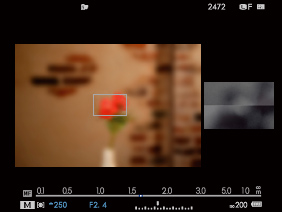
This impressive hybrid viewfinder (first seen in a more rudimentary form on the original X-Pro 1) is the biggest operational difference between the X-T1 and the X100T. It is the nearest I have ever found to the real McCoy. It is an enticing addition but I have a sneaking suspicion that many owners will tire of having too much choice and will eventually opt to use the full-frame electronic viewfinder most of the time.
The X-T1, while not sporting the hybrid abilities of the X100T, fights back with a truly large EVF which has a trick or two up its optics. This is a monster finder with x0.77 magnification and DSLR fans will not feel shortchanged in terms of size. In my opinion it is the finest electronic viewfinder found on any mirrorless camera.
It offers all the manual focus options found on the X100T, including focus peaking and split image, but adds the ability to view two electronic images simultaneously, such is the size of the window. You can opt to see a slightly smaller main screen accompanied by a tiny magnified view of the focus area to its right (see image above right). I love this feature and, despite the Siren call of the X100T’s hybrid, the X-T1 implementation wins for me. Some users, I know, find this side-by-side arrangement distracting and compare it unfavourably with the normal rangefinder’s central focus pane. I am not so sure; the Fuji system doth grow on me.
Size and weight
As you can see from the size comparison at the top of this article, both these cameras are similar in dimensions. The DSLR-style viewfinder hump does add slightly to the height of the X-T1 but, subjectively, makes it look bigger still. The X100T and the X-T1 body (without lens), are essentially the same weight, give or take a gram or two. But, for real comparisons, add the 80g 27mm pancake to bring the X-T1 up to 520g compared with the 435g of the fixed-lens camera. In practice, this makes very little difference. In fact, if you add the handgrip, to make the X100T as stable in the hands as the X-T1, any weight advantage is gone.
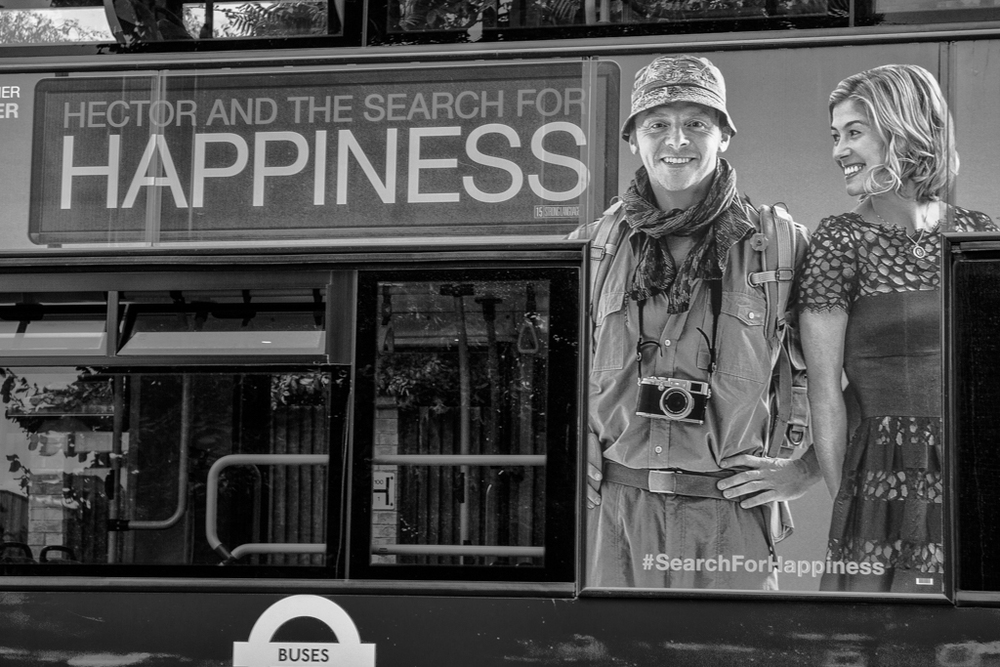
Appearance
These cameras are radically different animals to look at. The X-T1 follows the new trend aping DSLR styling (in common with the Sony A7 and the Olympus OMDs). Yet purists, particulaly Leica afficionados, are likely to prefer the simple retro appearance of the X100T.
Unlike many other mirrorless cameras (I am thinking of the Panasonic GX7 as an example), the X100T is differentiated by that large rangefinder-style window at the front. As a result, at a casual glance, this camera does look rather like a Leica. When I see X100 cameras in use I often have to do a double take.
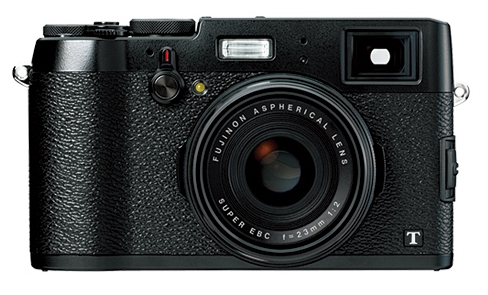
The X100T is definitely a prettier camera than the X-T1, which I have heard described unfairly as an ugly duckling, but it really comes down to personal preference. I like both cameras in different ways, it’s just a matter of taste.
One of the biggest assets for the street photographer is unobtrusiveness. That is one of the reasons why the Leica M is so popular and why bulky and noisy DSLR outfits are frowned upon. From this point of view, also, there is no doubt that the X100T fits the bill more effectively than the X-T1. Despite its relatively small size in relation to a bulky DSLR, the X-T1 does contrive to look more threatening than the X100T, even with the tiny 27mm in tow. If this is a major concern for you, give the fixed-lens camera a few more brownie points.
In this respect, also, it is worth noting that, thanks to the electronic shutter capability, either the X100T or X-T1 can operate in total silence. You have the option to use the mechanical shutter up to 1/4000s if you wish, but neither camera has an objectionably loud operation, nowhere near as loud as the Sony A7 and A7r, for instance.
Controls and handling
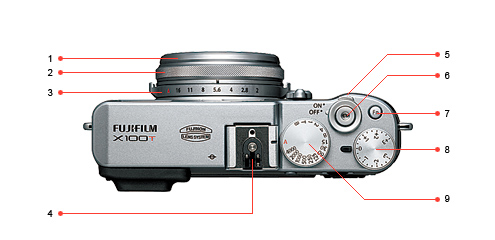
Both cameras follow traditional rangefinder practice in featuring a dedicated shutter-speed dial unlike, for instance, the Sony A7s which adopt the PASM dial of the DSLR.
When set to A(uto) the Fuji shutter dial puts the camera in aperture priority mode. Setting the aperture also to A(uto) achieves fully automatic operation while moving the shutter speed dial away from A puts the camera into shutter priority mode.
Both also offer a dedicated exposure compensation dial which has been firmed up in comparison with earlier models; it is no longer extremely easy to knock inadvertently.
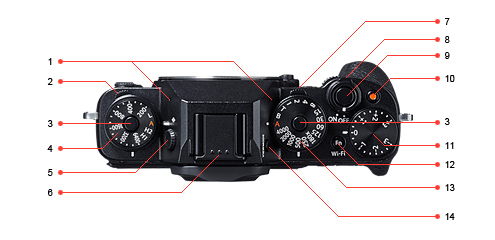
The X-T1 offers more direct physical adjustment dials in addition to the shutter-speed and exposure compensation adjustments seen on the X100T.
However, the shutter dial on the X-T1 has a central button which must be pressed before adjustments are made. While I like this safety measure, I know some photographers who find it slows down operation and find it an unnecessary complication.
Below the shutter speed dial is a concentric manual adjuster for exposure mode. As with the X100T, you have the advantage of a physical aperture ring on most lenses, but significantly in terms of this comparison article, not on the 27mm.
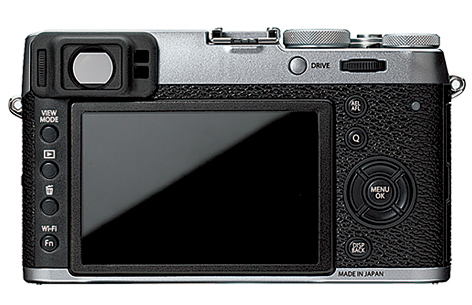
To the left of the very large viewfinder window is a further dial and concentric sub-dial to control ISO and drive mode. As with the shutter speed dial, the ISO adjustment ring features a central button which has to be pressed before turning. I cannot think of another mirrorless camera with a physical ISO adjustment dial and it is a very welcome addition.
I really like this all-on-view system and appreciate the ability to visually check all critical settings, including aperture where a lens features a ring, before setting out for the day.
Both cameras have a Q button to access a quick-menu (which is now customisable, incidentally) to handle additional features according to individual preference. Both also feature a collection of customisable Fn buttons.
Despite these two cameras being very similar in size, the rear layout of the X-T1 is somewhat more spacious and this helps overcome the rather cramped feeling you get with the X100T. The four-way controller on the X100T is nearer to the right-hand edge and sits under the ball of the thumb, at least when I hold the camera. This leads to inadvertent button presses, particularly the mis-selection of macro mode. I found this to be so bad that I disabled all four buttons and moved macro to another function button.
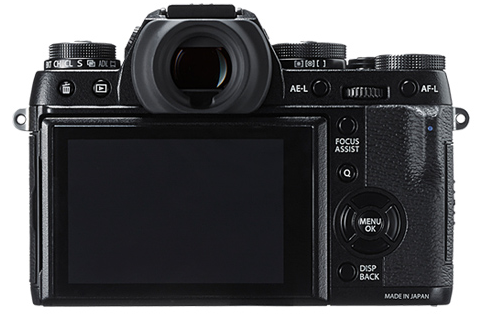
In contrast, the X-T1 can be held comfortably without the ball of the thumb covering the four-way pad. This is not just because of the more inward placement of the pad, it is primarily down to the larger front grip and the presence of a small thumb grip on the rear.
As a result, the X-T1 can be held more securely, with the thumb resting on the rear grip and without intruding on the selection pad. With the X100T, the thumb strays constantly to the left in order to achieve a firm grip and this causes the problem with the function buttons.
Light as the X100T is, I keep feeling the need for a larger grip. Of course, it is possible to fit an accessory and, if I were using this camera long term, I might consider it.
Afterthought:
Since publishing this article I spoke to my colleague Bill Palmer who mentioned the magic word ThumbsUp. I remembered I had a MatchTechnical ThumbsUp grip that might just fit the X100T. It did fit well enough to test holding the camera and, frankly, it makes an immediate difference to the handling. The camera can be gripped more firmly and the ThumbsUp keeps the thumb to the right, reducing the tendency to press on the four-way function pad. I would recommend this as an alternative to the extra bulk and weight of the accessory grip. Note that the Thumbs Up shown in the photograph is designed for the Fuji X-E1 and partly covers the scroll wheel and drive button on the X100T. Match technical makes a model especially for the X100T
One further difference, the placing of the viewfinder. Again, this is a matter of taste, with the X100T having the left-positioned finder common to rangefinders and most other mirrorless cameras. The X-T1 adopts the near-central positioning of the DSLR for its larger finder, accompanied by a much larger eye cup which glasses wearers will find more comfortable. Nevertheless, with the X-T1 you really do feel as though you are using a small DSLR and this may not be entirely to the taste of the purist rangefinder fan.
Versatility
The X-T1 wins hands down in terms of versatility because of its ability to use a variety of lenses but also because of its extensive set of manual controls and the addition of the useful tilting rear screen. On the other hand, the X100T is a dedicated 35mm-equivalent camera which allows you to concentrate on this one focal length without distraction. If you are a one-lens person and happy with 35mm, then the X100T is your camera, both on price and weight. But it is a one-trick pony and, unless you have a second interchangeable-lens device, you could eventually feel shortchanged.
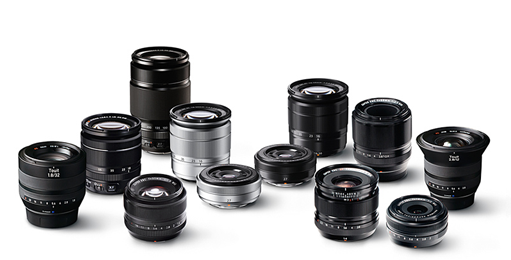
As a second body for the X-Series owner, the X100T is undeniably a very attractive proposition. But if you can afford only one camera and demand versatility then it has to be the X-T1.
The lightweight (80g) 27mm pancake lens turns the X-T1 into a real competitor for the X100T in terms of size and weight. This lens is one stop slower, at f/2.8, than the X100T’s fixed optic but, to my mind benefits from its slightly longer 41mm-equivalent focal length. It lacks an aperture ring, which is a pity. Nonetheless, the 27mm is a happy compromise for those of us who cannot decide between 35mm and 50mm. It is certainly a tack-sharp and excellent performer.

Owners of manual-focus lenses such as those from Zeiss, Leica and Voigtländer, will appreciate the ability to mount them on the X-T1 via the Fuji M adapter.
The X-T1 allows the storage of up to six lens profiles and the camera plays well with Leica lenses in my own experience. All this adds to the camera’s versatility.
The X-T1 is far more than a suitable replacement for the X100T: It is a fully-fledged system camera backed by one of the finest lens catalogues in the mirrorless world.
Price
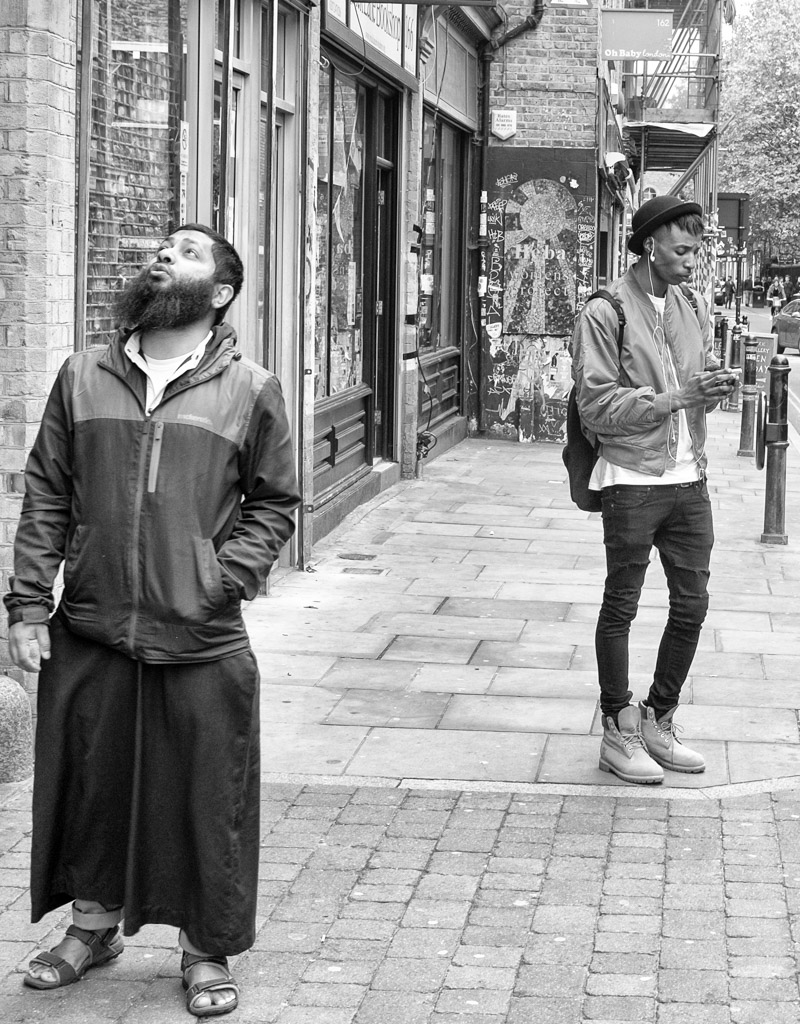
At the time of writing, the X100T is relatively new, therefore still not discounted significantly from its £999 recommended price. The black X-T1 has been around for some months and is now selling for around £899, body only. Add a 27mm pancake for around £300 and you have an outfit equivalent to the X100T for an additional £200. But you are getting a lot more camera for your money, not to mention widened future horizons.
Conclusion
I have no reason to change my view put forward in the previous article. Buy the X100T if you know you will be happy with just one focal length; certainly buy it if you can afford it in addition to another system camera. But for best all-round value, go for the X-T1. It is one of the finest mirrorless system cameras on the market, even taking into account the full-frame competition from the Sony A7 range, and you will be acquiring both a first-class street camera and the entry ticket to a remarkable system.
Product shots in this article by FujiFilm

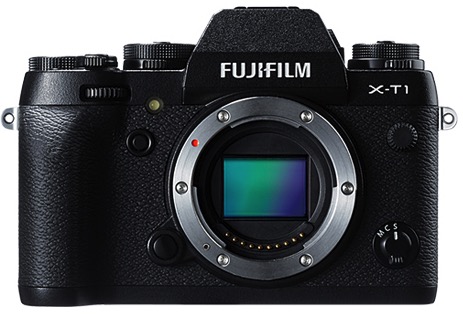
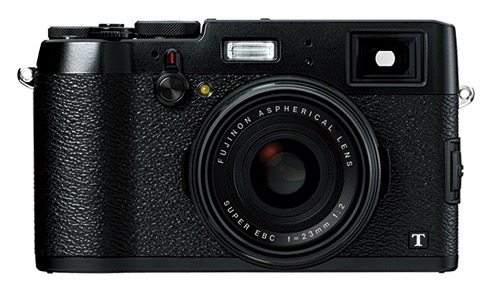
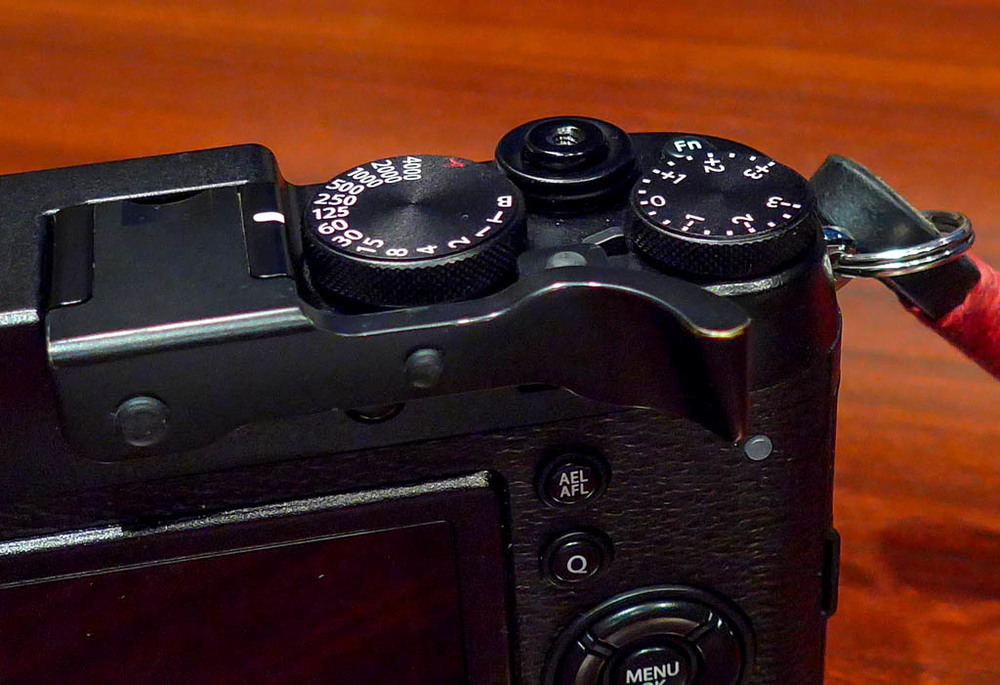
How much has the autofocus speed improved with the X100T? Still slower than most DSLR’s and tentative to nearly worthless in low light?
I feel the AF speed has improved considerably over the X100S although I didn’t have the two cameras side by side for comparison purposes. Sometimes these things can be very subjective. I would say the X100T is now very similar in single-shot AF performance as the X-T1. Both do have problems in low light (but then so do many other cameras as you know).